 Crime
Crime  Crime
Crime  Technology
Technology 10 Hilariously Over-Engineered Solutions to Simple Problems
 Miscellaneous
Miscellaneous 10 Ironic News Stories Straight out of an Alanis Morissette Song
 Politics
Politics 10 Lesser-Known Far-Right Groups of the 21st Century
 History
History Ten Revealing Facts about Daily Domestic Life in the Old West
 Weird Stuff
Weird Stuff 10 Everyday Products Surprisingly Made by Inmates
 Movies and TV
Movies and TV 10 Actors Dragged out of Retirement for One Key Role
 Creepy
Creepy 10 Lesser-Known Shapeshifter Legends from Around the World
 Animals
Animals 10 Amazing Animal Tales from the Ancient World
 Gaming
Gaming 10 Game Characters Everyone Hated Playing
 Crime
Crime 10 Terrifying Serial Killers from Centuries Ago
 Technology
Technology 10 Hilariously Over-Engineered Solutions to Simple Problems
 Miscellaneous
Miscellaneous 10 Ironic News Stories Straight out of an Alanis Morissette Song
Who's Behind Listverse?

Jamie Frater
Head Editor
Jamie founded Listverse due to an insatiable desire to share fascinating, obscure, and bizarre facts. He has been a guest speaker on numerous national radio and television stations and is a five time published author.
More About Us Politics
Politics 10 Lesser-Known Far-Right Groups of the 21st Century
 History
History Ten Revealing Facts about Daily Domestic Life in the Old West
 Weird Stuff
Weird Stuff 10 Everyday Products Surprisingly Made by Inmates
 Movies and TV
Movies and TV 10 Actors Dragged out of Retirement for One Key Role
 Creepy
Creepy 10 Lesser-Known Shapeshifter Legends from Around the World
 Animals
Animals 10 Amazing Animal Tales from the Ancient World
 Gaming
Gaming 10 Game Characters Everyone Hated Playing
10 Prehistoric Fossils That Were Discovered In Ancient Times
The first dinosaur bones weren’t found by scientists. They were uncovered thousands of years ago by early men with no way of understanding what they were seeing.
Ancient men stumbled upon fossils just like we do today, and they had to do their best to figure out what in the world they were looking at. Some would see femurs the size of a fully grown man or great rib cages that stretched out as wide as a building.
There are a handful of records that give us a hint into how they made sense of these things—small glimpses into what it would have been like to stumble upon the remains of a dinosaur thousands of years ago.
10 The Battlefield Of The Giants

“Before there were any humans,” the Greek historian Solinus wrote 1,800 years ago, “a battle was fought between the gods and the giants.”
To Solinus, this was no myth. He knew for a fact that giants had once roamed the Earth. He’d seen their bones himself.
He was writing about a town called Pallene where Greek mythology tells us that Heracles had destroyed a lawless tribe of giants. Every time it rained, Solinus wrote, massive bones would poke out of the ground “like men’s carcasses but far bigger.”[1]
For much of history, Solinus was written off as a liar. Then, in 1994, a rainstorm hit the place where Pallene had once stood and a villager uncovered what he believed was a giant’s tooth. The ancient town became the site of a paleontological dig. There, we found the remains of ancient mastodons.
The Greeks had only found their remains one bone at a time. With no concept of mastodons, they assumed that they were looking at the remains of massive men. To them, it was concrete proof that they’d built their town on top of a giants’ burial ground.
9 The Water Monsters Of The Badlands
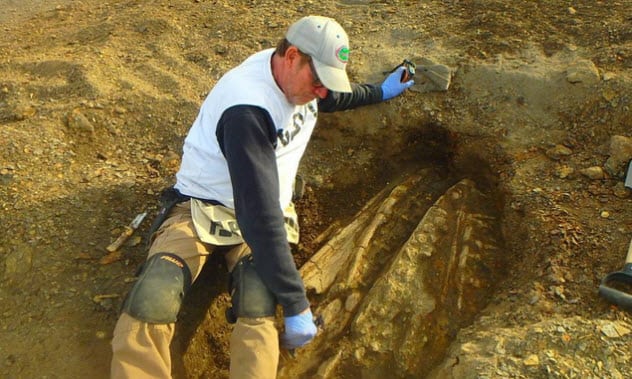
The Lakota people believed that the Badlands of South Dakota were once the site of an epic battle between water, thunder, and lightning spirits.
The water spirits were giant monsters known as Unktehi that fought a vicious battle against a flock of thunderbirds called Wakinyan that destroyed the whole area. The Wakinyan burned the forests, boiled up the sea, and left nothing but a scorched land behind.
The only thing left, the Lakota believed, were the bones of the dead monsters still lying in the scarred land.
Those bones really are in the South Dakota Badlands. Years later, paleontologists discovered that the area was an incredible source of dinosaur remains. There, they found the bones of marine reptiles called mosasaurs and flying reptiles called pterosaurs, all of which died about 100 million years ago.[2]
It’s believed that the Lakota legend came from them stumbling upon these bones. They found the remains of what really were monsters of the water and the air, living on what had once been an ancient sea.
It’s a safe bet that the pterosaurs didn’t really have lightning magic. Other than that, though, the Lakotas’ story wasn’t that far off from the truth.
8 The Cyclical Universe Of Xenophanes
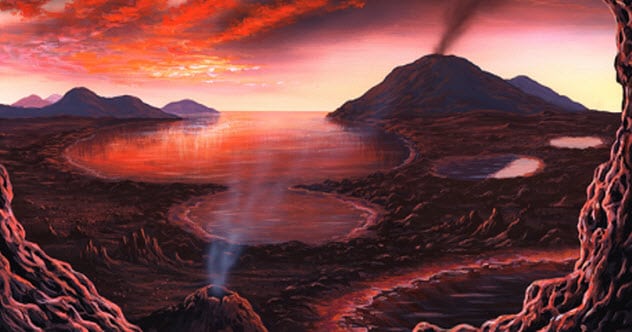
Not every fossil was mistaken for a mythological creature. Some people in the ancient world did their best to take a scientific approach.
When the Greek philosopher Xenophanes found fossilized seashells on a mountain, he took a more logical approach. He accepted that they were probably nothing more than what they seemed to be: the remains of shellfish now resting on dry land.
These fossils, Xenophanes argued, were proof that those mountains had once been underwater, however many thousands of years ago. This was way back in the sixth century BC—and Xenophanes was exactly right.
But he took his conclusions a bit further than modern scientists. He believed that all of the Earth had once been covered in water and that man had risen out of a primordial slime. So far, that isn’t that too different from our modern understanding of the world.[3]
But he insisted that it would be cyclical. In time, Xenophanes claimed, the world would sink under the sea once more and man would revert into mud. Then we would emerge once more, and the eternally repeating cycle of human history would begin again.
7 The Stone Chakras Of Vishnu
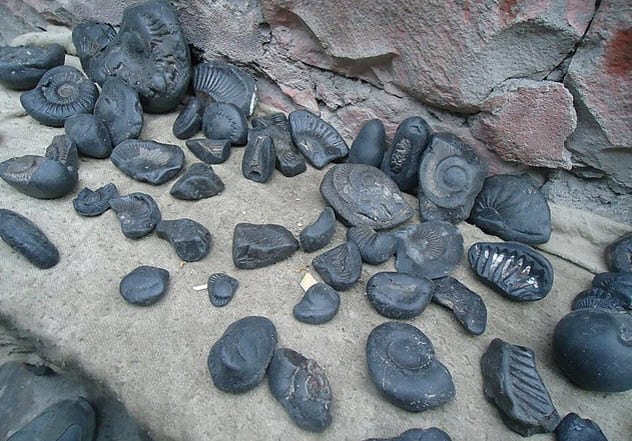
A village called Salagrama in Nepal was absolutely overflowing with fossilized seashells. However, the people who found them came to a very different conclusion about what they were looking at. They believed that they’d found the chakras of the four-armed god Vishnu.
In the Hindu belief, Vishnu carried a stone disk called the Sudarshana Chakra in one of his hands. Those seashells, they believed, were Vishnu’s chakra turned to stone by a demon’s curse.
According to an old legend, Vishnu was cursed to turn to stone after disguising himself as the demon Jalandhara to trick Vrinda, Jalandhara’s wife, into sleeping with Vishnu. When Vrinda woke up and realized that the man in her bed wasn’t really her husband, she became so furious that she cursed Vishnu to turn into stone, grass, trees, and plants.[4]
For centuries, ancient Hindus would treat these seashells as sacred objects. They believed that the shells were Vishnu’s chakras that had been turned to stone, broken off, and left on Earth. In other words, they were the holiest things a Hindu could find.
6 The Fields Of Dragon Bones
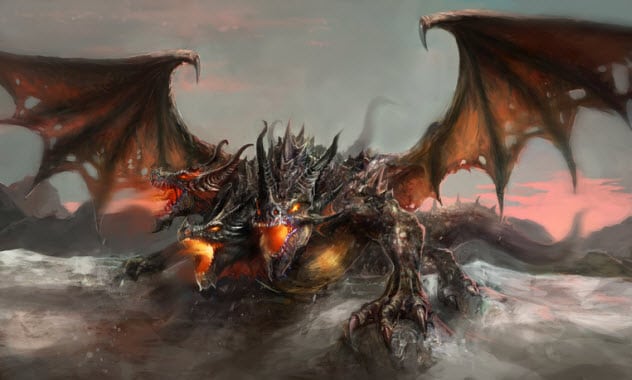
Chinese travelers once feared to enter the deserts of Issedonia. They believed that those lands had once been haunted by demons and dragons. The remnants were still there: fields upon fields of white dragon bones.
Issedonia struck a special fear in their hearts, but it wasn’t the only place overrun with dragon bones. The Chinese believed that they were all over the nation. In the I Ching, a farmer uncovering dragon bones in his field is listed as a “good omen.” And in the second century BC, a canal was named the “Dragon-Head Waterway” on the basis that “dragon bones were found” at that site.[5]
Historian Adrienne Mayor believes that those lines stem from farmers digging up the massive bones of extinct animals, and she has a pretty good reason to believe it. As late as 1919, China still had exhibits of dragon bones on display—some of which paleontologists still have today.
However, the bones came from extinct species of horses and deer. They had fossilized into such hard shapes that the ancient people couldn’t imagine that they came from anything less than supernatural monsters.
5 The Shoulder Blade Of Pelops
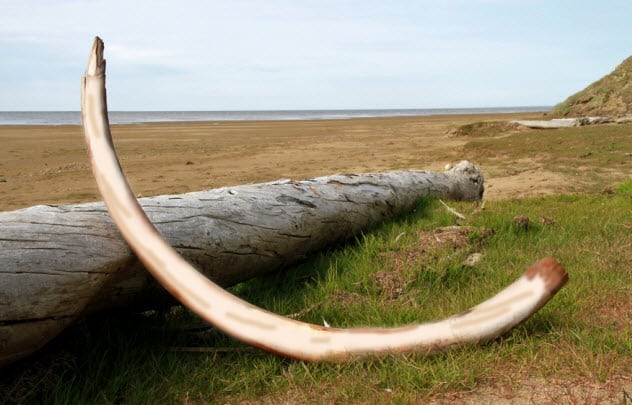
An ancient Greek fisherman once cast his net into the sea and found something unexpected. It was a long, thin, white bone, far too large to have come from anything he’d ever seen before.
After a bit of panicking, the fisherman brought the bone to the oracle, who told him that she knew exactly what it was—the shoulder blade of a demigod. She claimed that the bone came from Pelops, son of Tantalus and grandson of Zeus, who supposedly had a shoulder of pure ivory.
According to legend, Pelops had fought and died in the Trojan War. As the Greeks carried his body back home, their ship was hit by a violent storm that knocked Pelops’s body into the water. There, the oracle told the fisherman, the body had lain until he unearthed it.
The bone was put on display at the Temple of Artemis, and the fisherman and his family, who were now seen as blessed by the gods, were appointed as the official caretakers of Pelops. Apparently, they weren’t great at it because the bone had disappeared by AD 150.[6]
We can only speculate about what the fisherman really found. But the leading theory is that he stumbled upon the tusk of a woolly mammoth, perhaps smoothed down from the years underwater until it could pass as the chunk of an ivory shoulder bone.
4 The Bones Of Antaeus
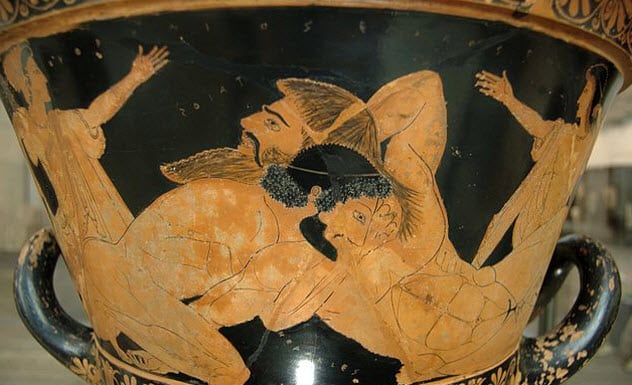
Two thousand years ago, the people of Tingis insisted that their town had been built next to the burial ground of a massive giant. His name was Antaeus. He had built their city and lived among them for years until he met his end—killed by Heracles in a lethal wrestling match.
To the Romans, this all sounded like a lot of superstitious nonsense. When Roman commander Quintus Sertorius was in Tingis, he resolved to prove the locals wrong. They took him to the supposed giant’s burial mound, which Sertorius’s men dug up. He expected to gloat gleefully when he found nothing there.
However, to Sertorius’s surprise, his men unearthed a gigantic skeleton. It’s unlikely that they dug up much more than a few bones, but they went home insisting that they had discovered the remains of a man who was 26 meters (85 ft) tall.[7]
The humbled Sertorius had the man reburied, conceding that this really was the burial ground of a legendary figure. As a result, we can’t know for sure what he found, but we have a pretty good idea.
Today, that burial mound is a major excavation site for Pliocene-Miocene fossils, where ancient mammoths, whales, and gigantic relatives of the giraffe have been found. One of them probably left the bones that Sertorius dug up.
3 The Black Bones Of Set
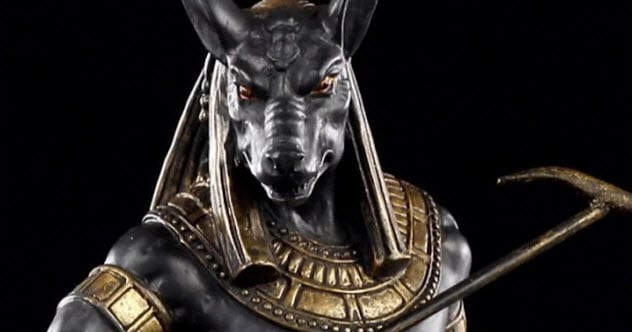
Between 1300 and 1200 BC, the ancient Egyptians uncovered at least 3 tons of fossils. They found the bones of massive, extinct breeds of hippos, crocodiles, boar, horses, antelopes, buffaloes, and more in a huge excavation project.
We can only guess what was going through their minds. Not a single written record of this ancient dig exists today. All we have are the bones and our best guesses.
We know that all the fossils were pitch-black. When the Egyptians found them, they must have thought that the fossils had something to do with the gods. After transporting the bones massive distances, the Egyptians placed them inside shrines to Set, the god of darkness and chaos.
The Egyptians carefully wrapped the fossils in linen and placed them in rock-cut tombs as though giving a respectful burial to the honored dead. Perhaps they thought that these were the remains of gods or some minions of Set. All we know for sure is that they stayed in those tombs wrapped in linen and untouched for more than 3,000 years before they were finally discovered in 1922.[8]
2 The Mythical Graveyards Of The Mahabharata
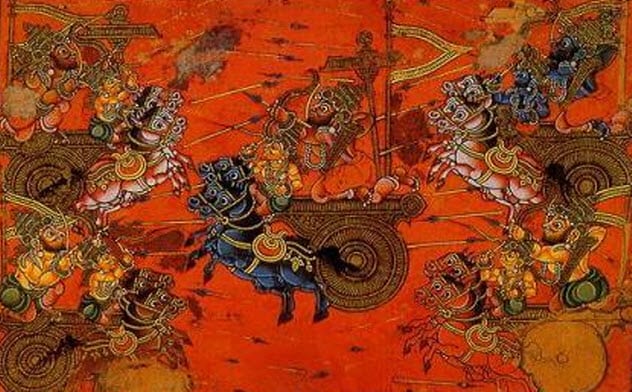
One of the major Hindu legends is the story of Mahabharata, an epic battle between heroes, gods, and monsters.
There are different versions of the story. But in the wildest ones, it was a single battle fought with millions of soldiers on each side. Hundreds of thousands of elephants, horses, and chariots were brought into the war, leaving thousands of dead bodies rotting on the battlefield when it all ended.
Even the gods joined in. Shiva, Krishna, and Rama all came into the fight, which climaxed in an epic battle between a giant named Bhima and a supernaturally powerful man named Duryodhana. According to the legend, Bhima tore Duryodhana from limb to limb before finally being struck down by a thunderbolt from the sky.
Historian Alexandra van der Geer believes that this story might have had its roots in ancient fossils. The Siwalik Hills, where the legendary battle was fought, is the site of two different types of ancient remains.
First are the giant tortoises, Stegodons, saber-toothed tigers, and four-horned giraffes that died there millions of years ago. By coincidence, it’s also filled with bronze javelins and spears from a real battle that was fought thousands of years ago.[9]
Van der Geer believes that ancient Indians found the remains of old weapons side by side with the bones of unimaginable monsters. The ancients assumed that they’d stumbled upon a mythical battleground, a place where human soldiers had fought alongside monsters.
1 Shen Kuo’s Dream Pool Essays
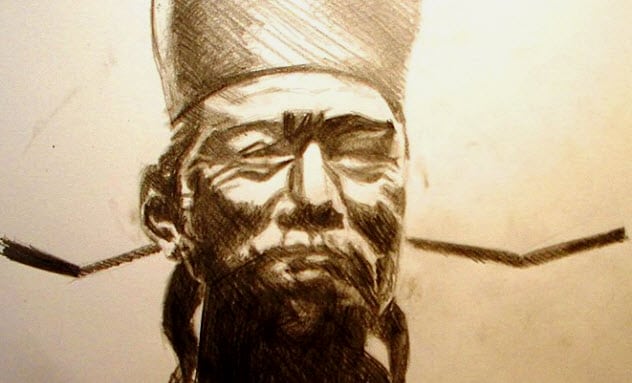
When Shen Kuo, a Chinese scholar who lived in the 11th century AD, studied ancient fossils, he didn’t chalk them up to any kind of mythological creatures or magic. Shen Kuo came up with other explanations—ones that were so far ahead of their time that the rest of the world wouldn’t accept them for nearly 1,000 years.
In his book Dream Pool Essays, he claimed that the landscape of the world was shaped over millions of years through mountain erosion, uplift, and the deposition of silt. In part, his argument was due to some fossilized seashells found in the Taihang Mountains hundreds of miles from the ocean.
Based on the shells and the erosion of the mountains, he reasoned that the mountain had shifted over thousands of years, coming up with something that wasn’t too far from the modern idea of tectonic shift.[10]
Based on petrified bamboo he found in northern China, he argued that the world had undergone massive climate changes. According to Shen Kuo, the bamboo could only have grown if northern China had once been a far warmer place—again, something we now know to be true.
The Western world wouldn’t really start accepting Shen Kuo’s ideas until the 19th century—nearly 1,000 years later. Shen Kou was a millennium ahead of his time.
For more fascinating facts about fossils, check out 10 Misidentified Fossils and Top 10 Significant First Fossils.








